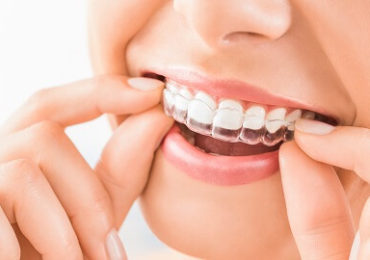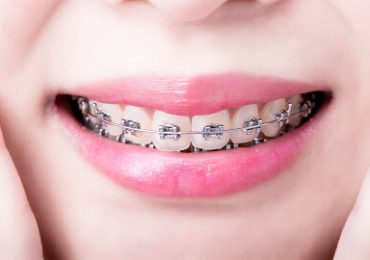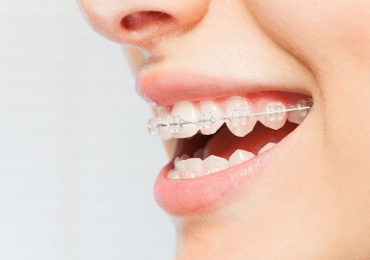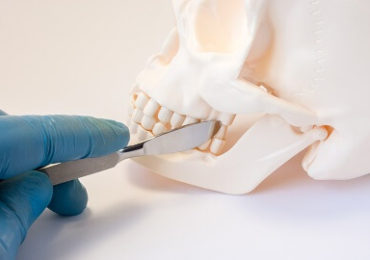Will my Braces Hurt?
One of the most commonly asked questions about dental braces is whether placing them causes any pain or discomfort. We are happy to let you know that braces do not hurt at all when they are applied to the teeth, so there is no reason to be anxious. In most cases, there may be mild soreness or discomfort for a day or two after braces are placed or after orthodontic adjustments are made.
What should I expect when getting started with braces?
Here is an overview of what you can expect when starting braces:
- Consultation – At your consultation we will take 45min to fully explain all the orthodontic problems and the best options for creating a beautiful smile with a stable bite for a lifetime of smiles. We will explain the benefits and limitations of various treatment options of Braces, Clear Braces, Clear Aligner Trays, Retainers & Custom Appliances. A written quote will be provided with an affordable payment plan. Most patients will have Records done on the same day as the consult if they choose to start.
- Records – We will start with photographs of the teeth & smile, X-rays, and digital impressions of the teeth. The records can be done on the same day as the consultation when you decide to start the process towards a beautiful smile.
- Placement of braces day – The placement of braces is a longer visit (45 min). We ask that these long visits be in the morning as we take pride in precisely position each brace for ideal results to be achieved. The placement of braces will not be painful in the slightest, so no numbing or anesthetic is needed.
In the evening after receiving braces, it may take longer to eat meals, but this is largely because it takes some time to adjust to wearing the braces. In some cases, the teeth may feel more sensitive than usual. Hard, difficult to chew foods should be avoided in favor of a softer, more liquid-based diet for the first few days after placement of braces. - Two days after placement – For the first several days after placement of braces the teeth will be slightly sore when chewing food, so try to eat softer things or soups during that time. This soreness is because the teeth are beginning to move in alignment process and are not used to the pressure of the archwire and orthodontic elastic bands. We will provide relief wax to apply over the braces if needed for lip comfort. Wax helps provide a smooth surface and alleviates irritation on the inner cheeks and lips. Additionally, over-the-counter pain medication (e.g., Motrin® and Advil®) may be taken as directed to relieve mild soreness of teeth. It is ideal to take this 15 min prior to your visit.
- Five days after placement – After five days, any initial discomfort associated with the braces should be completely gone. The teeth will have gradually acclimated to the braces, and eating should be much easier. Certain hard foods may still pose a challenge to the wearer, but normal eating may be resumed at this point.
- Orthodontic adjustment appointments – Regular orthodontic adjustment appointments are necessary to allow the orthodontist to change the archwire, change the colored rubber ties, and make adjustments to the braces. Fixed braces work by gradually moving the teeth into a new and proper alignment, so gentle pressure needs to be applied constantly. The first several days after an orthodontic adjustment may be slightly uncomfortable, but remember that this discomfort will quickly fade.
How can I minimize soreness of teeth?
- Dealing with discomfort – Over-the-counter pain medication and orthodontic relief wax will help alleviate any mild soreness and discomfort following placement o braces and orthodontic adjustments. Another effective remedy is to chew sugar-free gum, as this increases blood flow which helps reduces discomfort and can also encourage the teeth to align quicker.
- Starting elastic wear to correct the bite will initially make teeth sore. However as you continue to wear the elastics 24/7, soreness will dissipate until no soreness remains. The big mistake some make is to stop wearing the elastics…if elastics are stopped, then every time you re-start the elastics, soreness will re-develop. So you must start and maintain excellent continuous elastics wear 24/7 to minimize sensitivity and to quickly fix your bite & progress towards the end of braces efficiently.
What Can I Eat, & Cannot Eat with Braces?
For the first day or so, find foods that are soft such as yogurt, ripe sliced fruit, smoothies, milkshakes , Jell-O, soup, etc. Also try eating slowly and carefully.
What food are not allowed during braces?
Some foods that you should avoid while wearing braces:
- Hard & Crunchy Foods- will break off brackets and bend wires, which will extend your treatment: Chips, Candy, Peanuts, Crackers, Pizza Crust, Pop-Corn, Etc
- Sticky Foods- such as Candy, Now and Laters, Toffee, Gummy Bears Etc must be avoided as they can also break off brackets and loosen bands. These can also cause worse problems including white spot decalcification of teeth, or decay & cavities.
- Sugary Foods- Should be minimized to avoid tooth decay and staining of teeth.
Are there any alternatives to braces?
There are alternatives which we can discuss at your consultation. However, there aren’t many true Quality Alternatives to braces. From the good quality alternatives, you can choose:
- Traditional Silver Braces. These are durable, and efficient in achieving excellent results
- Clear Braces. These make braces much less noticeable. Available for Adults & Teens
- Invisalign or Clear aligner trays made and monitored by Orthodontists. – Some patients are also eligible for these trays as long as their overall bite is reasonably good. Although this is an option, the quality of the final bite can have some limitations.
- Removable appliances. We custom make that can help align individual teeth so that your dentist can place implants or restore missing teeth in a more ideal fashion. These appliances are custom made by Dr Bakar for unique problems to be efficiently corrected.
- Retainers for limited correction of individual teeth or maintenance of teeth as is to avoid shifting.
Very poor alternatives to braces which no orthodontist would ever recommend are:
- Mail ordered clear tray aligners, these are can lead to significant dental health problems & TMJ issues.
- Rushed 6 month Treatment by those who are not trained orthodontists
- Clear aligner treatment where bites end up worse off than when they started.
What’s the best age to get braces?
We recommend an orthodontic consultation for children when they reach the age of 6-7 years old. The purpose is to identify if there are any severe jaw growth issues which need early intervention.
There’s no set “best” age to get braces. For most kids, the best time for braces is generally between ages 10 and 14, when a child’s mouth and head are still growing and the permanent teeth are erupting. The exact time depends on growth and on how quickly a child’s adult teeth come in. However, braces can still be effective in older teenagers and adults.
What does “Phase I” and “Phase II” treatment mean?
- Phase I Treatment
Phase I, also known as “early intervention”, refers to orthodontic treatment that occurs before a child has all of their permanent teeth. This usually happens between ages 6-10. Phase I treatment doesn’t function as a complete replacement for future full braces – rather, its purpose is to fix major skeletal or crowding problems that are most easily corrected at an early age and to make the Phase II treatment (braces) easier. To put it simply, Phase I takes care of the initial structural (skeletal) corrections so that braces can make more refined (dental) corrections and finish the job.Some orthodontic problems like underbites/crossbites, large over bites, severe crowding, severely protruded front teeth, and narrow jaws are easier to correct at a younger age. Early correction often leads to easier and more predictable treatment after all of the permanent teeth have erupted. Early intervention can also decrease the need to extract permanent teeth in the future, correct harmful habits like thumb-sucking, tongue-thrusting, and speech problems, reduce the risk of tooth trauma to protruded front teeth, eliminate the need for later corrective surgery, and reduce teasing caused by abnormally crooked teeth. Phase II treatment would - Retainers between Phase I & Phase II
Between Phase I and II, kids may wear a retainer or space maintainer to maintain their phase I results, and should continue visiting their orthodontist so he or she can check on jaw and tooth development until Phase II is ready to start when all adult teeth are in. - Phase II Treatment
Phase II, sometimes just called “Full Treatment”, consists of full braces. It’s designed to finish straightening the teeth and correcting the bite once all the permanent teeth have come in. This is when the entire bite is fully corrected for a uniform and even fit. After Phase II is completed, retainers must be worn 27/4 for the first year and then nightly thereafter.
How long do people have to wear braces?
On average, most kids wear braces for 1 to 3 years, but this can vary greatly for each person based on growth and the severity of the problem. It also depends on the cooperation of the patient, including maintaining good oral hygiene, wearing auxiliaries such as rubber bands as directed, avoiding damaging food, and keeping all of their follow-up appointments.
I’m already an adult – should I bother with braces?
This is a subjective choice, but braces can still be quite effective for adults and modern styles are much less noticeable than the braces that many adults remember. In fact, about 20% of patients with braces are over 18. Many adults decide to get braces because they couldn’t afford them as a kid and now can, or because their teeth have shifted with age. Getting braces, even as an adult, can give you decades of more attractive straight teeth and correct serious structural problems, so many people see them as a worthwhile investment.
Other than making teeth look good, are braces really necessary?
Some people may get braces for mostly cosmetic reasons but there are also a number of health benefits to straighter teeth. Straight teeth are easier to clean well, which reduces tooth decay and gingivitis. Correcting the bite also fixes many structural problems, which can reduce jaw pain and make chewing less painful. In some cases TMJ pain can be reduced or eliminated.
I had braces as a kid and hated them. Are they still that bad?
No. They may not exactly be enjoyable, but they’re less noticeable, less painful, and more efficient than you remember. You can now get clear brackets or Invisalign for a less noticeable look, and even “traditional” metal brackets are much smaller than in the past. New heat-activated wires move teeth with constant, more gradual pressure, so each adjustment hurts less and teeth realign more quickly. Computer technology in orthodontics has also improved greatly, giving us “smart” wires and brackets that move teeth faster and more efficiently.








